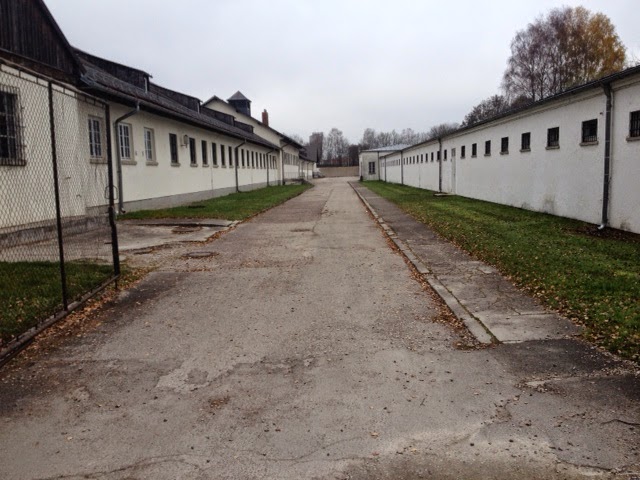I went to Dachau on Monday. It is very strange, because it is a nice little town who's name has such a bad connotation. To get there, you take the S2 train to Petershausen, although sometimes it doesn't go all the way to Petershausen, but only goes to Dachau. For these trains, it is somewhat uncomfortable boarding a train that says "Dachau." Of course, the people who live there probably wish that they weren't so infamous to the rest of the world.
Then, you take a bus to the KZ-Gedenkstätte (concentration camp memorial site). You can also walk the distance, following the path that the prisoners had to walk when they were discharged from the train, and there are signs along the way. In Dachau, as with many other German cities, there is a J-F Kennedy Platz, which is situated on the Sudetenlandstraße. (In Munich, there's a bridge over the Isar river named the JF Kennedybrücke.)
The memorial site itself is quite powerful. It was the first camp in Hitler's regime, started in 1933. It was intended for German politicians in order to solidify his control over Germany. Some things that I hadn't known before include the fact that for most of the war there were no Jews there. Hitler expressly did not want Jews in camps that were in Germany. This is why they went to camps in the occupied countries, like Auschwitz. Also, it's one of the few camps where some original building survive - although some have been reconstructed also. Many of the German camps were demolished and there is only a memorial site. In Bavaria, all school children are required to visit one of the camps, and many go to Dachau. Also, in Germany, all military officers are required to visit one of the camps.
The day I went it was very cold and gray. I suppose it gave me more of a feeling of what it was like, not that anything really could. I did think about the book by Louis Zamperini, and his description of the camps in Japan that he was in. The description of my guide was very similar.
Here are a few photos:
A "back alley" between buildings where - at the wall at the end - some firing squad executions took place.
The main square where "roll call" was taken twice a day. The prisoners had to stand for up to 3 hours as they were counted. It took so long because by the end of the war there were 40,000 prisoners.
The rows of foundations of the bunkhouses. The foundations are original, but the two bunkhouses at the far end are reproductions. The buildings had been demolished in the 1960s.
One of the poster in their extensive history exhibition. Translation: "Our last hope: Hitler." It is certainly true that, from what I've read, Hitler did seem like one who would lead Germany out of it's terrible economic crisis precipitated by the end of WWI and the world wide depression of the thirties.
Overall, quite an experience.




No comments:
Post a Comment